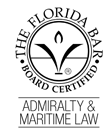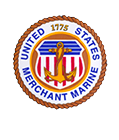Whether a Barge Worker is a Seaman for Jones Act Purposes
 Our lawyers are often contacted by maritime workers who were injured on the job who wish to know what legal rights they have and what type of recovery they may be entitled. The first question that must be addressed is whether or not the maritime worker is a seaman entitled to recovery under the federal Jones Act or a non-seaman entitled to recovery under the Longshore and Harbor Workers’ Compensation Act. Court opinions from time to time provide guidance as to the facts necessary to make this decision.
Our lawyers are often contacted by maritime workers who were injured on the job who wish to know what legal rights they have and what type of recovery they may be entitled. The first question that must be addressed is whether or not the maritime worker is a seaman entitled to recovery under the federal Jones Act or a non-seaman entitled to recovery under the Longshore and Harbor Workers’ Compensation Act. Court opinions from time to time provide guidance as to the facts necessary to make this decision.
Facts of the Case
A tug boat struck two crane barges which were spudded down or anchored at a dock facility. The two barges were engaged in constructing a dock at the time of the incident. A worker on one of the crane barges was injured. From this incident, the injured worker brought a claim against the owner of the offending tugboat as well as the company overseeing the dock building seeking various damages, including loss of earnings and earning capacity, pain, suffering, mental anguish and emotional trauma. A motion for summary judgment was filed seeking to deem the maritime worker as a seaman who was entitled to the protections of the Jones Act. The company overseeing the dock work opposed the motion.
Seaman Analysis
The determination as to whether a maritime worker is a seaman is a mixed question of law and fact. The court tackled this question by first determining whether the crane barge is a vessel and, if so, whether the injured maritime worker contributed to the mission of the vessel which was substantial in both time and duration.
Whether the Barge Was a Vessel
The court analyzed whether the barge was a vessel by focusing on whether it was capable of being used to transport equipment and persons over water. Records showed that the barge was originally designed to transport cargo on rivers. Sometime hereafter, it was fitted with a man lift and cherry picker for it to be used for dock construction. The court found that such modifications do not change its overall design or ability to transport persons and cargo on navigable waters. The court also pointed to evidence establishing that the barge did move along the bank of the river during dock construction and, in fact, the injured worker testified that he and his fellow crew members were on the barge when it was moved into position to perform various construction tasks. The court reasoned, because the barge remained practically capable of being used as transportation on water, and at all times appeared to be a standard navigable barge, it was a vessel for Jones Act purposes.
Whether the Injured Maritime Worker Contributed to the Mission of the Vessel
Next, the court reviewed whether the injured maritime worker contributed to the barge’s mission and whether it had a substantial connection to the barge. The evidence showed that the worker’s job entailed replacing old material in order to construct a new dock. This work was completed from the barge. Since the barge’s mission was dock construction, and the worker was performing duties associated with dock construction, the court found that the worker contributed to the barge’s mission.
Whether the Injured Maritime Worker Had a Substantial Connection to the Vessel
The injured maritime worker performed his duties on the vessel for three months before the accident. However, this was a new job for the worker. The Court found that additional facts were needed in order to determine whether his connection to the barge was substantial.
As shown, many facts go into determine whether a maritime worker is a seaman entitled to Jones Act protection. If you are a maritime worker and were hurt on the job, contact our board certified maritime attorneys for a free consultation.












